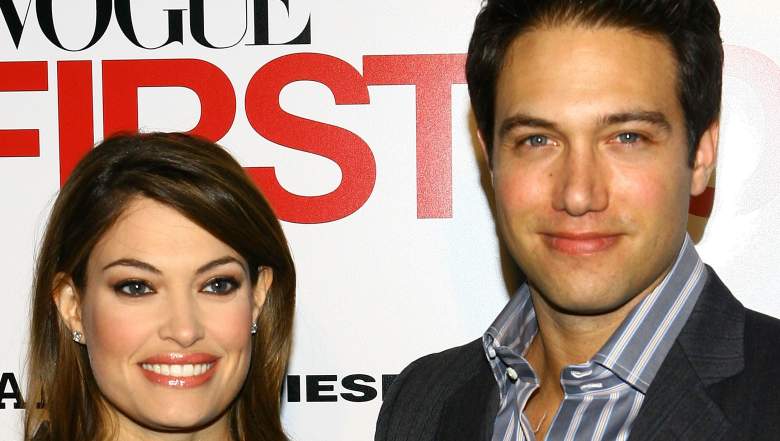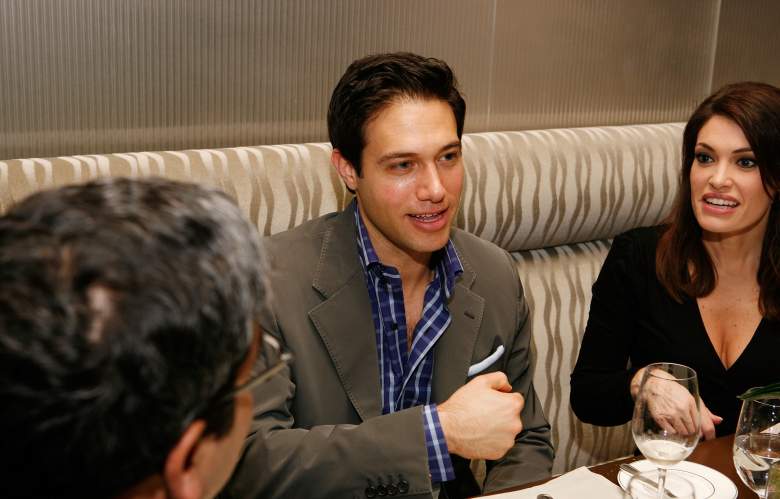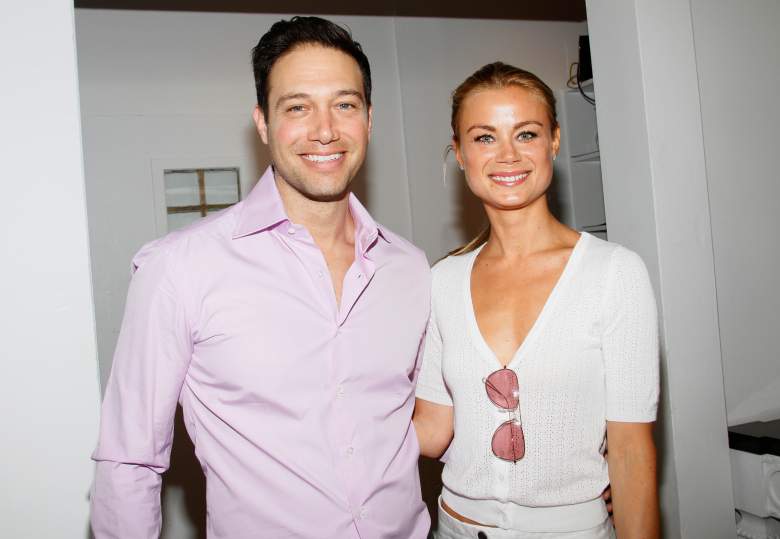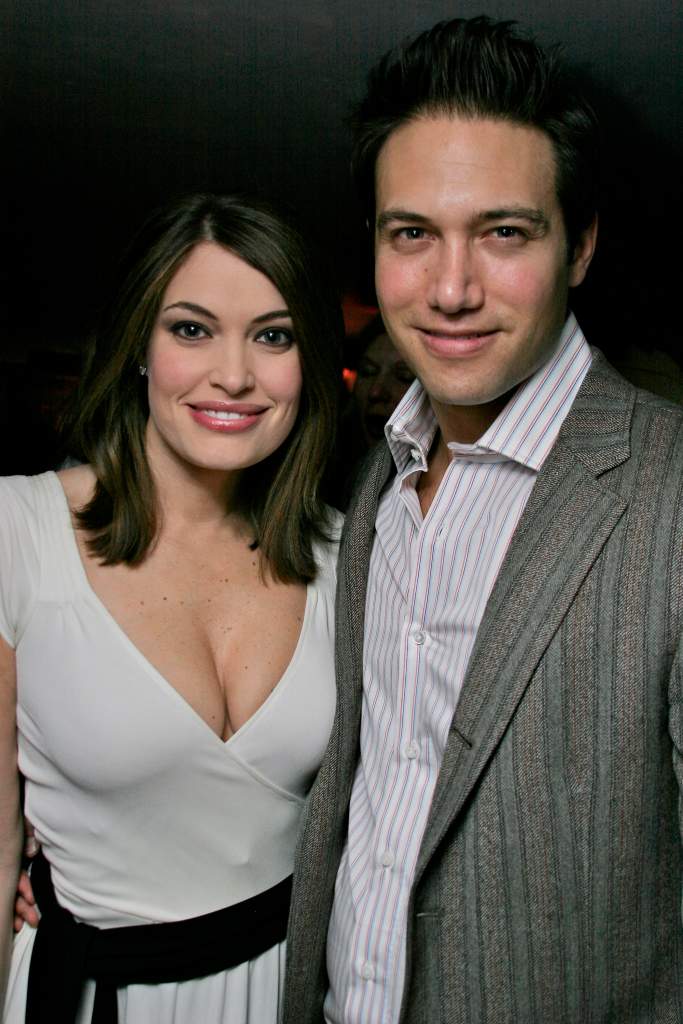
Getty Kimberly Guilfoyle and her second husband, Eric Villency.
Kimberly Guilfoyle, an anchor on Fox News‘ The Five and a potential replacement for White House Press Secretary Sean Spicer if he’s fired, has been married twice. Her second husband was Eric Villency, the CEO of Villency Design Group.
In a May 16 interview with Mercury News, Guilfoyle said she was in conversations with the White House to take over Spicer’s job. However, Spicer still has the job.
“Kimberly is a valued member of the FOX News primetime lineup, and is under a long-term contract with the network,” a Fox News spokesperson said in a statement to Heavy.com. A spokesperson for Guilfoyle added, “As I stated in the interview, I really love what I do and my job co-hosting The Five is tough to beat.”
You can follow Villency on Twitter and Instagram.
Here’s what you need to know about Eric Villency.
1. Villency & Guilfoyle Share Joint Custody of Son Ronan

Eric Villency and Kimberly Guilfoyle in 2008. (Getty)
Villency and Guilfoyle tied the knot on Memorial Day 2006. In October that year, son Ronan Anthony was born. According to a New York Post report from 2009, the couple had an amicable split in 2009, agreeing to share custody of Ronan. The Post also reported that they signed a prenup.
In a 2015 interview with Mediate, Guilfoyle said that she is very close with Villency’s family. She explained:
My second husband, Eric Villency, is the father of my beautiful boy Ronan Anthony. Even though we’re divorced, I’m still very close with his family. Even when people don’t stay married, they can still be a family together. That’s been something that’s been really good for developing me as a person. It’s been a very positive learning experience. When you go through divorce with children you don’t make it about you, make it about that child. Eric and I both want a positive environment for our son.
2. He’s Now Married to His Second Wife, Designer Caroline Fare

Eric Villency and Caroline Fare in 2014. (Getty)
In December 2013, Villency married his second wife, Swedish designer Caroline Fare. She was 28 at their time of their marriage.
Brides.com reports that the two were introduced by Sandra Ripert, the wife of chef Eric Ripert and a mutual friend, in January 2010. In April 2013, Villency proposed and she said yes.
The wedding took place at the Eau Palm Beach with 160 guests in attendance.
“We wanted a place on the ocean where our guests could join us for the weekend,” Caroline told Brides. “My friends and family from Sweden were so excited for the warm weather!”
Fare is a wedding dress designer, her website notes. She only designs six “exquisite” dresses a year for “very specially chosen brides.” She also has an active Instagram page.
3. Villency Has Been CEO of the Villency Design Group Since 1998

Kimberly Guilfoyle and Eric Villency in 2007. (Getty)
Since 1998, Villency has been the CEO of Villency Design Group. The firm, based in New York, was founded in 1932 by Villency’s grandfather, Maurice Villency. It has risen to become one of the most respected design firms on the world across a variety of platforms and industries.
The company started as a furniture store, but Villency made the decision himself to close the stores in 2007 to focus solely on design.
“It was a pivotal decision, but it was the best decision we ever made because it really enabled us to focus on our company and executing for our clients. Once we made that decision, the consumer product part of our company really exploded,” Villency told Fast Company.
Villency doesn’t just focus on interior design. The firm is behind the design of the signature Soul Cycle design and various performance apparel for different brands.
The firm has also designed technology for eBay, Rockstar and other branded accessories. Villency has also collaborated with different fashion brands.
4. Villency’s Advice to Entrepreneurs Is to ‘Infuse Your Passion’ Into Your Everyday Life
In a 2014 interview with Entrepreneur, Villency gave his advice for future entrepreneurs. He said it’s important to have your personal passions be a part of everything you do.
“Infuse your personal passion into everything you do in your life,” he told the site.
For Villency, one of his passions is fitness and health. “For me it’s about blending a perfect balance of wellness with lifestyle, and design with beauty,” Villency told Entrepeneur. That’s why his firm has contributed to the design of so many wellness and exercising products.
“In a sporting era of shortcuts and fallen stars, athletic achievement can be looked at cynically these days,” he told Entrepreneur. “With Feats of Strength I really wanted the design to honor a love of fitness that was also authentic and celebrated all the people who love to be active warriors in a natural way.”
5. Villency Worked as a Model For Calvin Klein & Dolce & Gabbana
As the New York Times noted in a 2003 profile of Villency, he once had a stint as a fashion model, working for Calvin Klein and Dolce & Gabbana, before he took over the reins of his family’s company. He also worked in real estate. But even his father, Robert Villency, recognized that he had an eye for design.
“I don’t have an aesthetic bone in my body, but Eric has his grandfather’s sense of design,” Robert told the Times.
As Fast Company reported in 2015, Villency Design Group has 300 employees, but just 15 are full-time designers. He values collaboration and has a group of employees who have been at the company for over 30 years.
“Their opinions are very important in the design process. They can say, ‘Hey, don’t use that spring, or don’t use that ball bearing because I’ve had real problems with it.’ It’s an unusual way of approaching design. It’s really about fabrication and production. And that informs everything we do,” Villency told Fast Company. “Having those capabilities led us to projects that other people were either unable to do or unwilling to do. That’s how we got our niche.”


